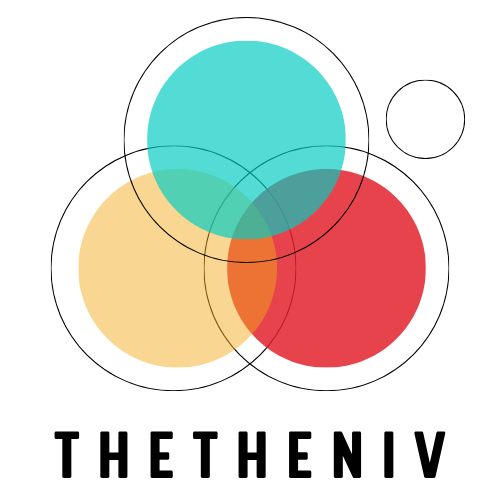Anúncios
Entender o design tecnológico é crucial tanto para profissionais da indústria quanto para usuários comuns. Essa disciplina combina arte com tecnologia, criando produtos que não apenas atendem a propósitos funcionais, mas também oferecem apelo estético.
À medida que nossa dependência da tecnologia cresce, a valorização dos princípios do design tecnológico torna-se essencial. Este artigo explora a importância do design tecnológico, seus princípios fundamentais e seu impacto na experiência do usuário.
Além disso, compreender o design tecnológico permite que os indivíduos naveguem no cenário digital com mais eficiência. Capacita os usuários a tomar decisões informadas sobre os produtos que usam diariamente, aprimorando sua experiência geral.
O que é Design de Tecnologia?
Em sua essência, o design de tecnologia envolve a criação de produtos tecnológicos funcionais e visualmente atraentes. Este campo abrange vários elementos, incluindo interfaces de software, designs de hardware e experiências do usuário.
O objetivo do design de tecnologia é simplificar a interação e aprimorar a usabilidade. Designers equilibram estética e funcionalidade para garantir que os produtos sejam fáceis de usar e, ao mesmo tempo, agradáveis à vista.
Anúncios
No design de tecnologia, os princípios de design centrados no usuário são de extrema importância. Essa abordagem garante que as necessidades dos usuários sejam priorizadas, resultando em maior satisfação e engajamento.
Além disso, o design de tecnologia envolve a colaboração entre diversas disciplinas, incluindo engenharia, design gráfico e psicologia. Essa colaboração interdisciplinar promove a inovação e a criação de produtos superiores.
Em última análise, o design tecnológico visa preencher a lacuna entre os usuários e a tecnologia. Ao focar em interações fluidas, os designers aprimoram a experiência do usuário e tornam a tecnologia mais acessível.
Anúncios
A importância da experiência do usuário (UX)
A experiência do usuário (UX) é um componente crítico do design de tecnologia. Ela se refere à forma como os usuários interagem com a tecnologia e à sua satisfação geral com essa interação.
Um ótimo design de UX pode impactar significativamente a retenção e a satisfação do usuário. Quando os usuários acham os produtos fáceis de navegar e agradáveis de usar, é mais provável que retornem.
Além disso, uma abordagem UX forte incentiva o feedback dos usuários, promovendo a melhoria contínua. Os designers podem refinar seus produtos com base em experiências reais dos usuários, gerando melhores resultados.
Além disso, investir em design de UX de qualidade pode reduzir custos ao longo do tempo. Um produto bem projetado geralmente requer menos recursos de suporte ao cliente e treinamento.
Em última análise, priorizar a UX no design de tecnologia garante que os produtos atendam às necessidades do usuário de forma eficaz, promovendo uma conexão mais profunda entre a tecnologia e seus usuários.
Princípios-chave do design de tecnologia
Diversos princípios fundamentais norteiam o design de tecnologia, garantindo eficácia e usabilidade. Compreender esses princípios ajuda os designers a criar produtos tecnológicos mais bem-sucedidos.
Em primeiro lugar, a simplicidade é primordial. Designs simples aprimoram a usabilidade, facilitando a navegação e a interação dos usuários com a tecnologia.
Além disso, a consistência entre as interfaces aumenta a familiaridade. Os usuários se beneficiam de designs previsíveis, que reduzem a curva de aprendizado e promovem uma melhor experiência geral.
Além disso, a acessibilidade é vital. Os designers devem considerar usuários com deficiência, garantindo que a tecnologia seja utilizável pelo maior número possível de pessoas.
Por fim, o design iterativo é crucial para a melhoria. Ao testar e refinar designs com base no feedback do usuário, os designers podem criar produtos mais eficazes e fáceis de usar ao longo do tempo.
Ferramentas e Tecnologias em Design de Tecnologia
Diversas ferramentas e tecnologias são essenciais para um design tecnológico eficaz. A familiaridade com essas ferramentas pode aprimorar a capacidade do designer de criar produtos funcionais e atraentes.
Ferramentas de prototipagem como Sketch e Adobe XD permitem que designers criem modelos interativos de suas ideias. Essas ferramentas facilitam revisões rápidas, tornando o processo de design mais eficiente.
Softwares de design gráfico, como Adobe Illustrator e Figma, desempenham um papel significativo no aspecto visual do design de tecnologia. Designers usam esses programas para criar visuais impressionantes que aprimoram a experiência do usuário.
Além disso, ferramentas de teste de usabilidade ajudam a identificar pontos fracos em um design. Ferramentas como UserTesting e Hotjar permitem que designers coletem feedback valioso de usuários reais.
Por fim, ferramentas de colaboração como Slack e Trello melhoram a comunicação entre as equipes de design. Uma comunicação clara promove o trabalho em equipe, levando a melhores resultados de design.
Desafios no Design de Tecnologia
Apesar do seu potencial, o design de tecnologia enfrenta diversos desafios. Compreender esses desafios ajuda os designers a inovar e superar obstáculos na criação de soluções.
Um desafio significativo é o ritmo acelerado do desenvolvimento tecnológico. Os designers precisam atualizar continuamente suas habilidades e adaptar seus designs para acomodar as tecnologias em evolução.
Além disso, garantir a acessibilidade pode ser complexo. Designers devem se manter informados sobre os padrões de acessibilidade e as melhores práticas para criar produtos inclusivos.
Além disso, equilibrar estética e funcionalidade costuma ser uma tarefa difícil. Os designers precisam satisfazer tanto o apelo visual quanto a usabilidade para atender às expectativas do usuário.
Por fim, coletar feedback preciso dos usuários pode ser desafiador. Os usuários nem sempre fornecem insights úteis, dificultando a implementação de mudanças com base em suas experiências.
O Futuro do Design de Tecnologia
Olhando para o futuro, o design de tecnologia continuará a evoluir. Tecnologias emergentes, como IA e realidade virtual, já influenciam as práticas de design e as interações do usuário.
À medida que a IA se integra cada vez mais à tecnologia, experiências personalizadas para o usuário provavelmente se tornarão a norma. Os designers precisarão criar sistemas adaptáveis que aprendam e respondam ao comportamento do usuário.
Além disso, a ascensão do trabalho remoto mudou o panorama do design de tecnologia. Os designers precisam considerar novas maneiras de criar experiências envolventes e colaborativas para equipes remotas.
Outra tendência é o foco crescente na sustentabilidade. Os designers precisarão priorizar materiais e processos ecologicamente corretos em seus projetos para se alinharem às preocupações ambientais.
Em resumo, o futuro do design de tecnologia é promissor, com inúmeras oportunidades para inovação e aprimoramento do engajamento do usuário. Adaptabilidade será fundamental para prosperar neste cenário em constante mudança.
Conclusão
Entender o design tecnológico é crucial para quem navega no mundo atual, impulsionado pela tecnologia. Ao compreender os conceitos básicos, as pessoas podem compreender como o design impacta suas interações diárias.
Seguir princípios fundamentais, utilizar ferramentas eficazes e considerar o feedback dos usuários resulta em designs tecnológicos de alta qualidade. Isso garante que a tecnologia seja acessível e agradável para todos os usuários.
À medida que o design tecnológico continua a evoluir, manter-se informado sobre tendências e desafios continua sendo essencial. Abraçar novas ideias fomentará a inovação contínua no design tecnológico.
Em última análise, apreciar o design tecnológico aprimora nossa experiência com a tecnologia. Isso leva a produtos melhores que enriquecem nossas vidas e redefinem nossas interações com o mundo digital.



